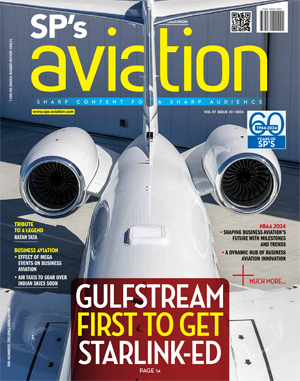INDIAN ARMED FORCES CHIEFS ON OUR RELENTLESS AND FOCUSED PUBLISHING EFFORTS

SP Guide Publications puts forth a well compiled articulation of issues, pursuits and accomplishments of the Indian Army, over the years

"Over the past 60 years, the growth of SP Guide Publications has mirrored the rising stature of Indian Navy. Its well-researched and informative magazines on Defence and Aerospace sector have served to shape an educated opinion of our military personnel, policy makers and the public alike. I wish SP's Publication team continued success, fair winds and following seas in all future endeavour!"

Since, its inception in 1964, SP Guide Publications has consistently demonstrated commitment to high-quality journalism in the aerospace and defence sectors, earning a well-deserved reputation as Asia's largest media house in this domain. I wish SP Guide Publications continued success in its pursuit of excellence.
Lawrence Hargrave (1850 - 1915)

He was an engineer, historian, explorer, astronomer, inventor and aeronautical pioneer all rolled into one
Any history of early aviation would be incomplete without mention of Lawrence Hargrave—Australia’s pride. Lawrence was born in Greenwich, England, on January 29, 1850, but when he was 15 his family migrated to Australia. His father, who rose to become Attorney General of New South Wales, made some prudent investments that later enabled Lawrence to become a gentleman scientist of independent means. Lawrence was an engineer, historian, explorer, astronomer, inventor, and aeronautical pioneer all rolled into one.
After participating in some exploratory voyages and spending several years as a professional astronomer, Hargrave decided to study human flight. He began with experiments with monoplane models in 1884. He discovered that a curved wing surface gives much greater lift than a flat one—the basic principle of the aerofoil used to this day in practically everything that flies. Then he turned his attention to kites. He found that a kite with two separated “cells” or double planes had the greatest stability and soaring power. His most dramatic demonstration was on November 12, 1894, when he linked four of his box kites together and added a sling seat below. The kite line was moored by a spring balance to two sandbags. Hargrave sat in the seat, carrying an anemometer and clinometer to measure wind speed and the angle of the kite line. He rose to a height of about 16 feet in a wind speed of 21 mph. This experiment was widely reported and established the box kite as a stable aerial platform. By demonstrating to a sceptical public that it was possible to build a safe and stable flying machine, he opened the door to other aviation inventors.
The Hargrave box kite, with its improved lift-to-drag ratio, was the inspiration behind many first generation aeroplanes. What it lacked was an engine that would be light and powerful enough to get it into the air and propel it forward. In 1889, Hargrave built a compressed air engine powered by three rotating cylinders—the radial rotary engine—which was one of the great inventions of his career. But it attracted so little notice that its principle had to be ”discovered” all over again, many years later. He doggedly built not less than 17 steam engines—all unsuccessful. Modest and unassuming, he had the optimism so essential for an inventor and the determination that refuses to be crushed by failure. He was defeated only by the inadequacy of engineering talent then available, shortage of money and the solitary nature of his work, and never managed to build an engine of adequate power-to-weight ratio. But in 1992, students at the University of Sydney rebuilt Hargrave’s 1902 aircraft from the original blueprint, replacing his engine with a modern one. It flew.
Hargrave was an excellent experimenter and his models were always beautifully fashioned. Octave Chanute, another aviation pioneer, said in 1893, “If there be one man, more than another, who deserves to succeed in flying through the air, that man is Lawrence Hargrave. He has now constructed with his own hands no less than 18 flying machines of increasing size, all of which fly. He uses exceeding care in determining the different elements which compose the flight of his models. He has carefully registered the sizes of all the parts, the power consumed in each performance and the length of the flight, together with its trajectory. He states that he has always kept his work in such shape that it could be taken up and continued by any person at any time; so that a stranger, if an expert, could come into his shop, study his notes and drawings, pick up his tools and continue his work, and thus no portion of it would be lost.”





